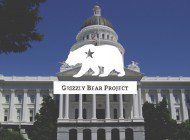It’s great to see the growing political focus on the economic gap between the haves and have-nots. Democrats and Republicans agree that the wealth gap exists, and that it is a problem that must be fixed in order for our state, and our nation, to thrive.
From President Obama’s middle-class economics in the State of the Union to Jeb Bush’s remarks delivered at a private address in San Francisco last week, income inequality is on the agenda for 2016.
That’s a good thing.
This project will be dedicated in part to helping push the debate on that discussion in California.
A recent story in the Los Angeles Times identifies one of the trends adding pressure on the state’s economy, and increasing the gap between the rich and poor -– the erosion of the state’s manufacturing base.
We are moving into the post-industrial age, an era of mechanized production, where machines can increasingly do jobs that used to pay real people livable wages.
In California, we have strong environmental and labor regulations that did not exist at the birth of the industrial age. These rules have improved and saved lives of workers and the communities where manufacturing plants are based. But they have also driven costs of manufacturing higher.
Both trends have slowed the growth of manufacturing in California.
As the LA Times’ Chris Kirkham reported earlier this month:
“The United States has seen a remarkable turnaround in manufacturing employment since the economy bottomed out five years ago — but California hasn’t.
“The state has been among the slowest to recover jobs in an industry long viewed as a bastion of middle-class opportunity.
“Since February 2010, U.S. manufacturing employment has increased at a rate of 6.7%, with some Midwestern and Southern states such as Indiana and South Carolina seeing gains of 15% or more. By contrast, California manufacturing has grown at about 1% over the same period.
“That could hurt California’s middle-class workforce: Manufacturing is the classic path to higher paying jobs for less-educated workers. On average, manufacturing workers make 8.4% higher wages each week than those in all other industries combined, according to a 2012 Brookings Institution study.”
These charts compiled from data from the Bureau of Labor Statistics tell the story.
Here is a graph of non-farm employment in the state over the last ten years. You can see the recovery of the jobs lost in the Great Recession.
You can see part of what’s driving the growth. Here is the chart for the Leisure and Hospitality industries over the same ten year period. In leisure and hospitality, we’ve created more than 260,000 jobs over the last decade.
At the same time, we have lost more than 260,000 manufacturing jobs in California since 2004. And they have not come back, even as our budget has come back into balance and overall job growth has returned to pre-recession levels.
While there are national and global pressures on manufacturing, they are acute in California. We have cutting-edge safety and environmental regulations, high costs of living, and a large underclass that does not have the training to serve the demands that manufacturing requires.
How can we sustain a middle-class in a post-manufacturing age? That will be a core question for the next generation of California’s business and political leaders.
It is a problem of global consequence and scope, but one that California must lead the way to address, because we are going to feel the impacts first.
This industrial economy has split into the information economy and the service economy. The information economy demands skill and training. The service jobs largely do not pay the livable wages that industrial jobs did.
What role can and should government play in addressing this economic evolution, and helping to create a sustainable economy based on the new realities? In the coming weeks, I will be talking to academics, elected officials, regulators and business leaders to get their answers to some of these questions.




